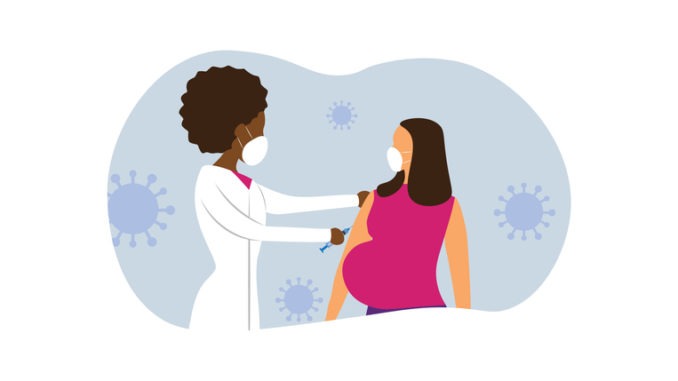
COVID-19 treatments and vaccines must be evaluated in pregnancy
This is an edited version of an article that originally appeared on The BMJ
The numbers of pregnant and postpartum women in the UK admitted to hospital or intensive care because of COVID-19 peaked over the summer. Maternal mortality has reached concerning levels in 2021, with case fatality rates rising in the US, doubling in Brazil, and almost tripling in India since the beginning of the pandemic – in Brazil health officials even suggested avoiding pregnancy to reduce risk during the pandemic.
Inconsistent messaging from authorities, driven by lack of trial data, has increased COVID-19 vaccine hesitancy among pregnant women. This, coupled with the increased transmissibility of new variants, and the relaxing of social distancing restrictions, contributed to the surge in hospital admissions seen in successive waves. Concerns around the longer-term effect of COVID-19 post-partum, including long COVID, cardiovascular complications of COVID-19 and widening socioeconomic disparities, are also mounting. Despite a desperate need for treatments, pregnant women continue to be left behind.
In the long shadow of the thalidomide and diethylstilboestrol tragedies, only one drug designed for use in pregnancy, atosiban, has been licensed in four decades, and only five prescription medicines (amoxicillin, labetalol, diazoxidine injection, doxylamine with pyridoxine, sodium feredetate) are licensed for non-obstetric use in pregnancy in the UK. A sobering 98% of all marketed drugs have insufficient or no safety data to guide dosing during pregnancy and lactation; this includes all COVID-19 vaccines.
Vaccination in pregnancy is not a new concept, nor are the struggles with uptake. Concerns about COVID-19 vaccination, like previous vaccines, have centred on fears of side effects for the foetus, doubts regarding efficacy, and even doubts around the need for immunisation. These concerns have been further compounded by misinformation regarding fertility, suspicion of the swift rollout of vaccines and the exclusion of pregnant women from preapproval trials, with levels of vaccine hesitancy highest in deprived communities and among those from ethnic minority groups.
Vaccination is currently recommended in pregnancy based on developmental and reproductive toxicology studies in animals, a positive risk-benefit profile in women of childbearing age, and post-marketing data from vaccinated pregnant women and their infants, rather than clinical trials. Despite cumulative data from over 200,000 pregnant women showing the effectiveness of vaccination, public confidence remains low. The effect of vaccine hesitancy may, worryingly, cross over to other vaccinations such as influenza. It is essential to eradicate endemic, off-label, prescribing in pregnancy, which excludes women and their babies from the protections afforded by the rigours of the licensing process and creates unacceptable ethical and legal dilemmas for clinicians.
Routes to change
There are clear routes to improvement. Medicines’ regulators in Europe, the US and the UK have recently taken a positive step by supporting ‘maternity investigation plans’, which build on the successes of paediatric investigation plans (PIPs) and orphan products. The introduction of PIPs through European legislation, in 2007, mandated that medicines’ developers evaluate the needs of children in relation to all new products. Orphan designation revitalised medicines’ development for rare diseases, and the US approved 31 products (58% of all approvals) for rare diseases in 2020.
Regulators effectively enlivened research into these areas by offering incentives alongside obligations; creative measures included a centralised procedure for the designation of orphan medicinal products, fee waivers and scientific support from early development through to market authorisation. Both PIPs and orphan designation offer market exclusivity extensions after authorisation, with PIPs extending market protection to drugs no longer covered by patents if they are then exclusively developed for use in children. A similar premise could be used to repurpose marketed drugs with a known safety profile for indications in pregnancy.
Additional strategies that can be readily implemented to invigorate development of drugs for pregnancy include prioritisation of developmental and reproductive toxicology studies at the start of drug development, consideration of physiologically based pharmacokinetic modelling, and ensuring pregnancy experts are involved in clinical trial development and trial-steering and monitoring committees. Consulting women – and organisations representing their interests and those of their babies – is key to ensuring pregnancy is not routinely used to exclude people from trials without clear scientific grounds.
Include pregnant women from the start of the process
These measures would encourage medicine developers in expanding fields, such as biological medicines, to include pregnant women from the start of the process. Monoclonal antibodies, for example, are likely to be strong therapeutic candidates for use during pregnancy among people with target conditions, potentially including COVID-19. The strong antigen affinity of monoclonal antibodies makes them highly effective, with minimal off-target activity, and placental transfer is likely to be limited, particularly during organogenesis.
The COVID-19 pandemic is radically changing the clinical trials’ landscape, catalysing collaborative drug development between academics, industry and regulators, and accelerating implementation of research findings. Equity and inclusion are essential to scientific advancement, and the benefits of innovation and drug discovery should safely reach everyone. We urge regulators and governments to implement these strategies for pregnant women and their babies who, for so long, have been left behind in the development of medicines and vaccines. An urgent shift in policy and investment is required to ensure that inclusion becomes the norm for pregnancy in development plans, unless otherwise fully justified.
This will help counter vaccine hesitancy, and improve confidence in the use of new treatments, leading to better health outcomes for women and their babies.

Be the first to comment